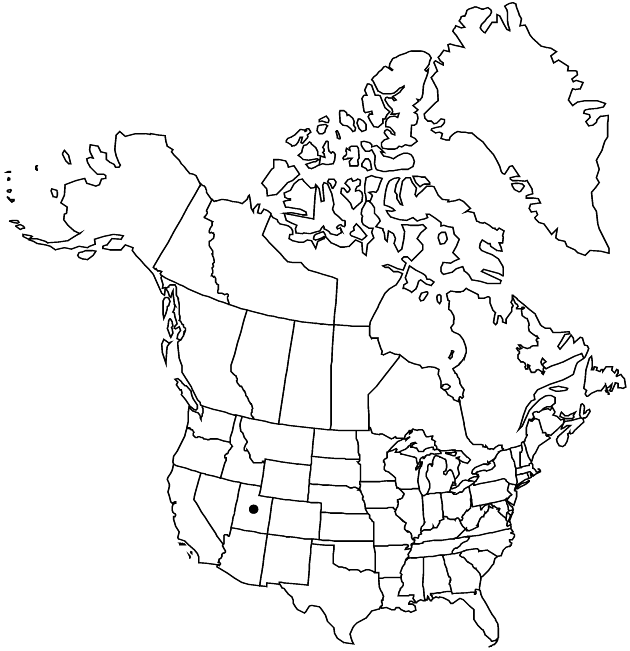Lygodesmia grandiflora var. entrada
Rhodora 95: 399. 1993.
Plants 30–45 cm. Stems erect or ascending, stiff, woody, branched from bases and distally. Leaves: proximal blades linear-acicular, 5–30 × 2–4 mm, stiff, spreading; cauline reduced distally, not scalelike. Heads 1–10, in loose, corymbiform arrays. Involucres cylindric (V-shaped in fruit), 20–22 × 5–7 mm, apices spreading. Phyllaries ca. 6. Florets 5, corollas white (or fading to pinkish). Cypselae seldom formed (ovaries 4–5 mm, abaxial faces smooth, adaxial weakly rugose, bisulcate with ridge separating sulci). 2n = 27.
Phenology: Flowering Jun.
Habitat: Juniper-scrub community, in deep sandy soil, Entrada Sandstone
Elevation: 1300–1500 m
Discussion
Of conservation concern.
Variety entrada is distinguished by its relatively large size, stiff stems (woody) and leaves, tomentulose phyllaries, and white corollas. It is similar to var. arizonica. Unlike other varieties, it has involucre apices somewhat spreading. Chromosome counts indicate that these plants are asexual triploids (A. S. Tomb, pers. comm.). Variety entrada is locally abundant in Arches National Park, near Moab.
Selected References
None.
Lower Taxa
"fine" is not a number.
